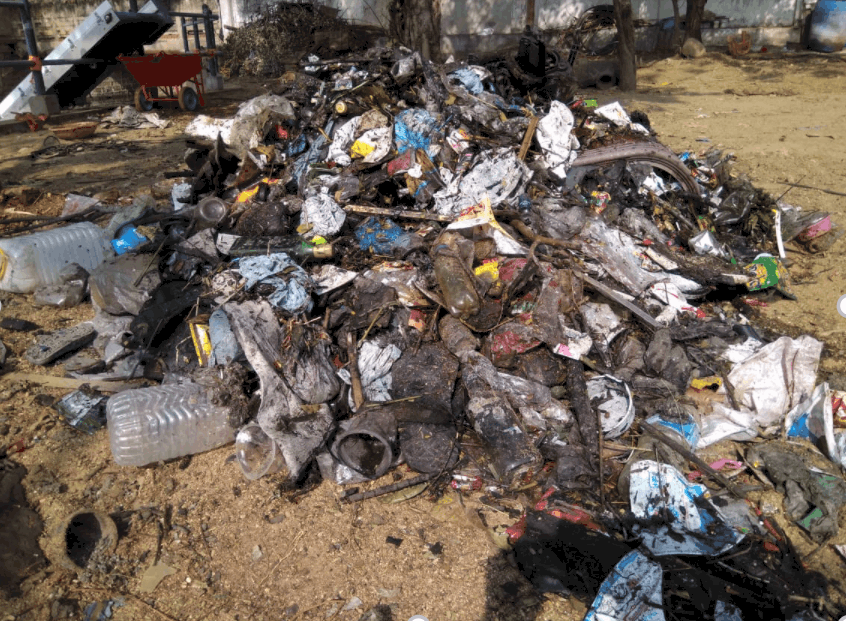As cities use up more resources, produce more and consumption spirals upward, there is a concomitant increase in solid waste generation. While this solid waste is comprised of both biodegradable waste and non-biodegradable waste (plastic, rubber, aluminum, glass etc.), the latter is what is most damaging to the environment. Most of the non-biodegradable waste ends up in landfills, open dumps and the natural environment, such as drains, rivers, lakes and the oceans. The iconic Hussain Sagar lake in Hyderabad presents a perfect example of an urban water body impacted by an increase in the flow of floating solid waste from upstream. But now, the successful clean up of the lake using an automated system brings hope to many others across the country that are struggling with waste contamination.
One of the major feeder inlets to the Hussain Sagar lake is the Picket drain. This drain traverses approximately 55 km through areas of diverse built-uses (Bowenpally Begumpet, Rasoolpura slums etc.), ultimately draining into the Hussain Sagar, carrying mixed domestic solid waste.
The floating waste blocks and chokes the drains and inlets resulting in urban flooding, water pollution and significant harm to the local biodiversity.
Why trap and remove the floating plastic?
Floating solid waste such as plastic, rubber and aluminium cans do not decompose easily in the natural environment. The image below shows the length of time for man-made marine debris to biodegrade in the sea as compiled by the National Oceanic and Atmospheric Administration (NOAA) and the Woods Hole Sea Grant.

The plastic waste (macro-plastics) further breaks down into micro plastics (<5 mm in diameter) due to natural weathering and the erosive processes present in an aquatic environment. This has serious environmental, health and economic impacts. It also creates breeding habitats for mosquitoes and other waterborne disease vectors, impacting the recreational and touristic values of urban waterbodies, in addition to causing loss of environmentally sensitive biodiversity habitat.
New research findings have indicated severe health impact on humans and animals due to rapidly growing pollution load of micro-plastics.
Read more: Chennai is breathing in plastic, the south more than the north
The good news: A successful pilot clean-up
Given the environmental, health and economic implications of water bodies contaminated by waste, the successful clean up of the Hussain Sagar Lake in Hyderabad is indeed an example that can be emulated.
The Government of Telangana, has been actively working towards rejuvenation of the lake for years now, aiming to bring back clean water, biodiversity and people to the lake.To that end, a tripartite partnership was signed between the Hyderabad Metropolitan Development Authority (HMDA), Government of Telangana, WRI India and DESMI to implement a pilot clean-up system for intercepting and removing floating solid waste from the Picket drain near Hussain Sagar lake as a demonstration project.
In December 2020, DESMI’s Ro-FENCE 600 floating trash barrier and automated recovery unit RISE R-A2100 was installed near the interception and diversion (I&D) structure along the Picket drain to intercept and remove the floating solid waste. Collected waste was segregated and taken to transfer stations or recycling centres.
While the floating barrier intercepts and traps the flow of the waste, the two automated recovery units (conveyor belts) recover the floating solid waste collected from the drain to the shore, to be eventually recycled or disposed of properly. These dual automatic conveyor belts facilitate waste recovery directly onto the waterway bank, draining the water in the process.
Read more: More buses, better footpaths and three more wishes from a Hyderabad resident
The recovered waste
The daily on-going monitoring and evaluation of the system reveals that approximately 200-300 kgs of floating solid waste (wet weight) per day has been removed from the drain, thus helping in cleaning the Hussain Sagar lake. From December 2020 till July 2021, DESMIs automated clean up system has removed 65-70 Tonnes of floating solid waste(FSW).
The waste collected is primarily mixed domestic solid waste consisting of plastics, wrappers, polyethene, biodegradables such as wooden logs, rubber shoes etc. The WRI team closely monitors the system’s working. Glass bottles are sold to private vendors on a weekly basis and the daily waste is transferred to the transfer stations for sorting and recycling.
Outcomes
The resulting reduction in the percentage of floating debris in Picket drain, and by extension in Hussain Sagar Lake, has benefitted the local environment and community significantly.
Key takeaways from this project include:
- Improvement and protection of Indian blue-green ecosystems
- Recovery of public spaces and special places with high tourism footfall
- Showcase the benefits it can bring to water, energy and waste sector of India
- Improve health and working conditions of operators
- Contribution to various United Sustainable Development Goals
The technology is environmentally sound and easily replicable. The floating booms can be contextually adapted and scaled depending on the waterbody condition (flow, depth and embankment conditions). In case of Picket drain, the solution has proven to be resilient to various conditions such as erratic rains, high volume of floating solid waste etc. It has proven to withstand such dynamic conditions. Thus, this effort showcased an innovative, cutting-edge and proven technological solution-oriented approach to clean-up solid waste in urban water bodies.
While the clean-up of water bodies using environmentally-sound technologies is possible, challenges exist at the top of the solid waste chain, such as regulation of consumption, disposal and management of waste. Concerted efforts are required to address the larger environmental challenge. Without such up-stream effort, this implemented technological solution might seem as fragmented seeds of change, as it taps the problem only at the middle of the system or downstream.
Adequate and innovative waste management service provisioning to reduce – recycle – reuse non-biodegradable solid wastes such as plastics along with positive change in citizen consumption pattern and behaviour will play a significant role in solving the up-stream floating solid waste problems of growing Indian cities.

